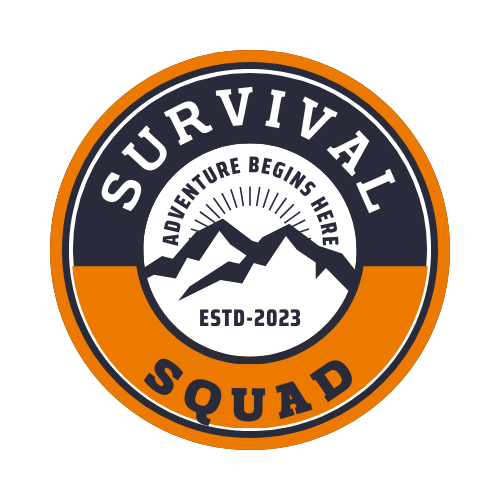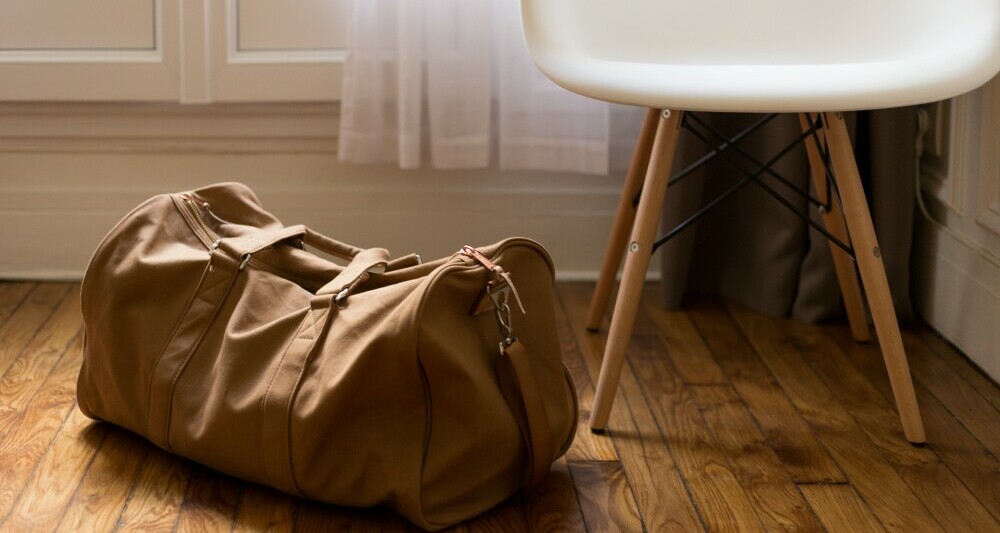Hey Y’all!
I hope you’re sitting comfortably with a cup of coffee because today, we’re diving into the nitty-gritty of home survival kits. Now, I’m no doomsday prepper, but I believe in being prepared for life’s unexpected curveballs. Whether it’s a power outage, a natural disaster, or just a surprise visit from the in-laws, having a well-thought-out survival kit can make all the difference. So, grab a notepad and pen, and let’s create the ultimate family-friendly home survival kit checklist together.
1. Water, Water, Everywhere:
First things first, water is life! When disaster strikes, you can’t expect to find clean water on tap. I like to have at least one gallon of water per person, per day, for at least three days. This should cover drinking, cooking, and a little hygiene, too. Don’t forget to toss in some water purification tablets and portable water filters, just in case.
- Water purification tablets or drops
- Collapsible water containers for easier storage
- Reusable water bottles with built-in filters
2. Chow Time:
An emergency is no time to start a crash diet. Stock up on non-perishable food items that your family will actually eat. Canned goods like tuna, beans, and soup are excellent choices. Don’t forget peanut butter, energy bars, and a few bags of rice and pasta. And for those sweet tooths among us, a stash of chocolate never hurts.
- Freeze-dried meals for variety
- Canned fruits and vegetables
- Instant oatmeal packets
- Nut butter (like almond or cashew butter)
- Jerky or dried fruit for protein and snacks
3. Light the Way:
Power outages can turn a regular evening into a cave adventure. That’s where a good flashlight and some spare batteries come to the rescue. Invest in a couple of high-quality LED flashlights and headlamps. I’ve got some strategically placed around the house. Plus, those glow-in-the-dark stickers you used to have on your bedroom ceiling as a kid? They’re perfect for marking emergency exits.
- Solar-powered lanterns or chargers
- Candles and waterproof matches
- LED flashlights and headlights
- Glow sticks for a fun, low-tech light source
4. First Aid Kit:
In my family’s survival kit, a first aid kit is non-negotiable. You never know when a mishap might occur, and a well-stocked kit can be a lifesaver. Think band-aids, antiseptic wipes, pain relievers, tweezers, scissors, and any prescription medications your family might need. I even throw in some extra face masks and hand sanitizer in case we find ourselves in a jam.
- Burn cream or gel
- Instant cold packs
- Emergency first aid manual
- Triangle bandages for slings
- Emergency dental kit
- First aid kit
5. Stay Warm and Cozy:
When the heat goes out in the middle of winter, you’ll be grateful for extra blankets, warm clothing, and a sleeping bag or two. I also pack hand warmers and those little chemical heat packs – they’re like a hug from Mother Nature on a chilly night.
- Mylar emergency blankets and regular fluffy ones
- Hand-cranked or battery-powered space heaters
- Thermal socks and gloves
- Warm clothing
- Insulated sleeping pads and bags for added comfort
6. Communication is Key:
In the digital age, staying connected is a priority. You’ll want to include a battery-powered or hand-crank radio to stay informed. And remember to pack extra batteries! A whistle can come in handy for signaling for help, and a notepad and pen are great for leaving messages or playing a game of hangman when the boredom sets in.
- Two-way radios for family communication
- Smartphone charger with a hand-crank or solar panel
- Hand crank, solar powered or battery powered radio
- A laminated list of important phone numbers and contacts
7. Tools of the Trade:
No, I’m not talking about power tools, but a few basic ones are great if you have them. A multipurpose tool, like a Swiss Army knife, is invaluable. Duct tape is another must-have for quick fixes. And if you’re feeling extra ambitious, throw in a wrench or pliers to turn off utilities if needed.
- Multi-tool with a firestarter
- Shovel or entrenching tool
- Duct Tape
- Rope
- Wire saw
- Super glue for quick repairs
8. Personal Hygiene:
Let’s be honest; nobody wants to be stuck without the essentials. In your kit, pack toothbrushes, toothpaste, soap, and hand sanitizer. Baby wipes are a godsend when a proper shower isn’t an option. And don’t forget feminine hygiene products if needed.
- Wet wipes for quick cleanups
- Face cleanser
- Tampons
- Toothbrush and paste
- Travel-sized shampoo and conditioner
- Disposable razors and shaving cream
- Compact mirror
9. Entertainment for the Masses:
Being cooped up for an extended period of time can lead to cabin fever. So, make sure to toss in a few games, books, puzzles, or whatever will keep your family from going stir-crazy. We’re talking about survival, not solitary confinement.
- Playing cards or travel-sized board games
- E-books or audiobooks on a fully charged e-reader
- Crossword puzzles or Sudoku books
10. Important Documents:
Now, we’re getting serious. You’ll want to have copies of important documents in your survival kit. This includes IDs, passports, insurance policies, and important medical information. Keep them in a waterproof container or a ziplock bag to protect them from the elements.
- USB drive with scanned copies of documents
- Digital photos of documents saved on your smartphone
- A list of emergency contacts and family members’ medical conditions
11. Cash is King:
When the ATM is out of order, cash becomes your best friend. Keep some small bills in your kit, as well as coins for any emergency payphones that may still exist.
- Larger denominations for emergency expenses
- Coins for vending machines or payphones
- Spare change and small bills for small purchases
12. Pet Care:
If you’ve got furry family members, they need to be prepared too. Stock up on extra pet food, water, and any medications they might need. A leash, carrier, or crate can be essential for their safety, especially in the chaos of an evacuation.
- Pet carriers for each furry friend
- Extra pet bedding or blankets
- Extra Pet food
- Collapsible pet food and water bowls
13. Kids & Babies:
Parents, this one’s for you. If you’ve got little ones, you’ll need to accommodate their needs. Pack diapers, baby food, formula, and a few favorite toys to keep them calm in stressful situations.
- Baby wipes and diapers in various sizes
- Reusable baby food pouches
- Small, non-toxic toys or comfort items
14. Stay Connected:
In a family survival kit, it’s important to have a communication plan. Make sure everyone in your household knows how to contact each other and where to meet if you get separated. This could be a nearby park, a neighbor’s house, or a designated meeting point.
- A family communication plan with designated meeting places
- Whistles or signaling devices for children
- A whiteboard and markers for leaving messages at home
15. Rotate, Don’t Forget:
Your survival kit isn’t something you can set and forget. Food, water, and medications have expiration dates. Check your kit at least twice a year, and replace any expired items. This is also a great opportunity to ensure your family’s needs have changed, like updating clothing sizes for growing kids.
- Regularly check the expiration dates on food and medications
- Consider vacuum-sealed packaging for longer shelf life
- Maintain an inventory list to keep track of your kit’s contents
16. Customization is Key:
One size doesn’t fit all, and your survival kit should be customized to your family’s unique needs. If you have family members with specific dietary requirements or medical conditions, be sure to accommodate them. Think of it as your own personal emergency buffet.
- Special dietary items for family members with allergies or dietary restrictions
- Medications and medical supplies specific to individual needs
- Comfort items like a favorite stuffed animal or blanket for children
There you have it, my take on the ultimate home survival kit checklist. Remember, it’s not about being a pessimist; it’s about being prepared for life’s unpredictable moments. When disaster strikes, you’ll be glad you took the time to create a well-thought-out kit that suits your family’s unique needs.
So, gather up those supplies, make a plan, and rest easy knowing you’re ready to face whatever challenges life throws your way. Stay safe, stay prepared, and keep a sense of humor – after all, a little laughter can go a long way in tough times. Cheers to a well-prepared family, ready to tackle anything that comes their way!
As always, please comment below with any questions, or suggestions on how to make this post more valuable to you!

